American Crocodile
- March 5, 2024
- 0 comment
The American crocodile, scientifically known as Crocodylus acutus, is a fascinating reptile native to the Americas. This remarkable species inhabits a range of coastal environments, including mangrove swamps, estuaries, and lagoons, where it thrives in both saltwater and freshwater habitats. Known for its prehistoric appearance and impressive size, the American crocodile is distinguishable by its long, narrow snout and powerful jaws lined with sharp teeth.
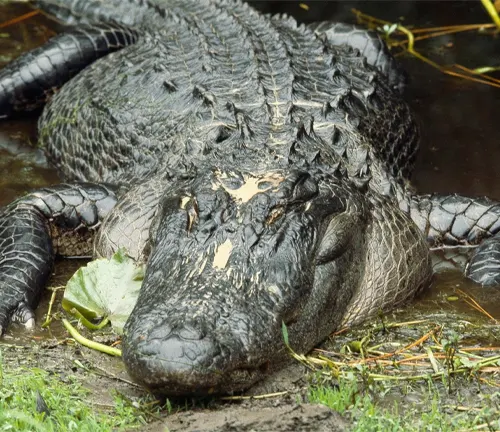
These apex predators play a crucial role in regulating prey populations and maintaining the balance of their ecosystems. Despite their fearsome reputation, American crocodiles are generally shy and reclusive, preferring to avoid humans whenever possible. However, encounters between humans and crocodiles can occur in areas where their habitat overlaps with human development, highlighting the importance of conservation efforts to protect both these magnificent creatures and their habitats.
| Specifications | Details |
|---|---|
| Scientific Name | Crocodylus acutus |
| Habitat | Coastal areas, mangrove swamps, estuaries, lagoons |
| Distribution | Southeastern United States, Caribbean, Central & South America |
| Length | Males: Over 15 feet, Females: Generally smaller |
| Weight | Males: Over 1,000 pounds, Females: Varied |
| Skin Texture | Rough, scaly with bony plates (osteoderms) |
| Snout Shape | Long and narrow |
| Jaw Structure | Powerful jaws with sharp teeth |
| Diet | Fish, birds, mammals, occasionally larger prey |
| Reproduction | Nests of vegetation, guarded by females |
| Behavior | Generally shy and reclusive, can exhibit aggression |
| Conservation Status | Threatened due to habitat loss, poaching, and climate change |
| Role in Ecosystem | Apex predator, regulates prey populations |
| Cultural Significance | Revered in indigenous cultures, symbolic of resilience |
Understanding the Fascinating Reptile
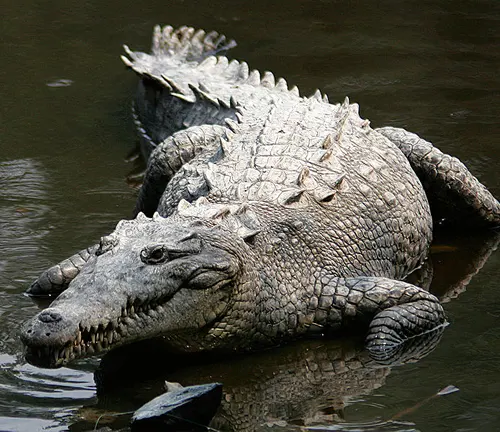
The American crocodile (Crocodylus acutus) stands as one of the most iconic and enigmatic reptiles inhabiting the freshwater and brackish waterways of the Americas. With its prehistoric appearance and remarkable adaptations, this species has long captured the imagination of scientists and nature enthusiasts alike.
Habitat and Distribution
Key Regions
Key regions refer to the primary geographical areas where American crocodiles are commonly found. These regions include coastal areas of the southeastern United States, as well as throughout the Caribbean and Central and South America. Within these regions, American crocodiles inhabit various habitats such as mangrove swamps, estuaries, and lagoons. These regions are vital for the survival and conservation of American crocodiles due to the availability of suitable habitat and resources.
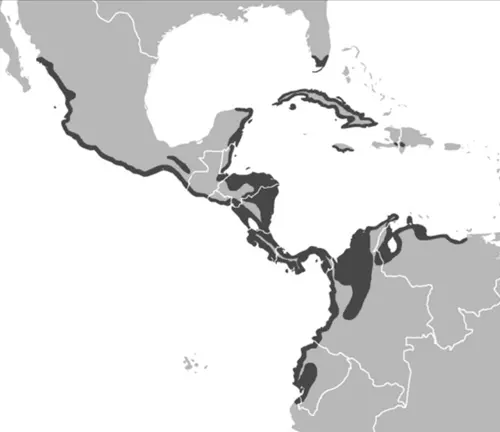
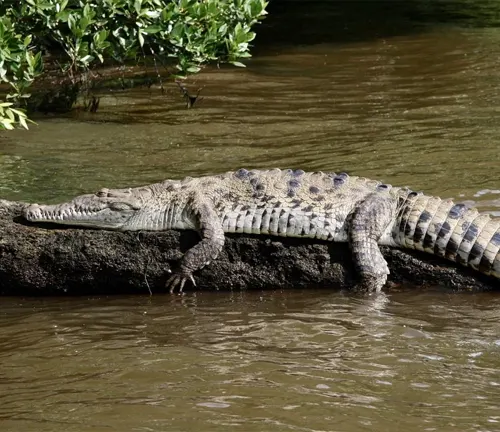
Unique Habitats
Unique habitats refer to the specific ecological environments where American crocodiles thrive and display distinct adaptations. One such unique habitat is mangrove swamps, which are coastal wetlands characterized by dense mangrove trees and brackish water. These habitats provide American crocodiles with abundant prey, shelter, and nesting sites. Additionally, estuaries and lagoons are unique habitats where freshwater from rivers mixes with saltwater from the ocean, creating a diverse and productive ecosystem that supports a variety of species, including American crocodiles. These unique habitats are essential for the survival and ecological functioning of American crocodiles and contribute to their overall conservation.
Physical Characteristics
Size and Weight
American crocodiles are known for their impressive size and weight. Males typically grow larger than females, reaching lengths of over 15 feet and weighing more than 1,000 pounds. On the other hand, females are generally smaller in size. These large dimensions make American crocodiles one of the largest crocodilian species in the world. Their size and weight contribute to their role as apex predators in their ecosystems, allowing them to hunt and consume a wide range of prey.

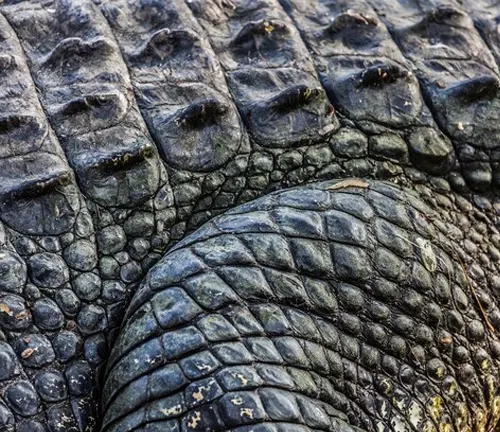
Skin Texture
The skin texture of American crocodiles is rough and scaly, providing protection against predators and environmental elements. Their skin is covered with bony plates known as osteoderms, which serve as armor and help regulate body temperature. The rough texture of their skin also aids in camouflage, allowing American crocodiles to blend into their surrounding habitats, such as mangrove swamps and estuaries, where they often reside.
Jaw Structure
American crocodiles possess powerful jaws lined with sharp teeth, perfectly adapted for catching and tearing prey. Their jaw structure allows them to exert tremendous force when biting down on their prey, making them efficient hunters. Additionally, American crocodiles have a specialized jaw mechanism that enables them to hold their jaws shut with incredible strength, making it difficult for prey to escape once caught. This formidable jaw structure is a key adaptation that contributes to the predatory success of American crocodiles in their natural habitats.
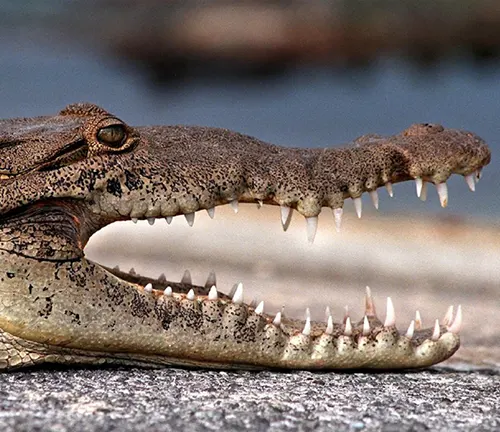
Behavior and Diet
Feeding Habits
American crocodiles are opportunistic predators with a diverse diet. They primarily feed on fish, birds, mammals, and occasionally larger prey such as deer or domestic livestock. Their feeding habits vary depending on factors such as prey availability and habitat. American crocodiles often use ambush tactics to capture their prey, lurking beneath the water’s surface and striking with lightning speed when prey comes within range. They have powerful jaws lined with sharp teeth, which they use to seize and tear apart their prey. After capturing their prey, American crocodiles may either consume it immediately or store it underwater for later consumption.
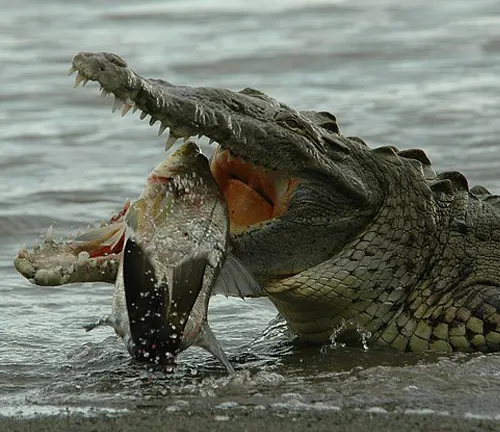

Reproduction
Reproduction in American crocodiles typically occurs during the breeding season, which varies depending on geographical location. Females build nests of vegetation in which they lay their eggs, usually in sandy or muddy areas near water. The nesting process is crucial, and females meticulously guard their nests against predators and environmental threats. The incubation period for American crocodile eggs is around 80 to 90 days. After hatching, the mother assists the hatchlings in reaching the water, where they begin their independent lives. Female American crocodiles exhibit maternal care towards their offspring, protecting them from predators and providing guidance during their early stages of development.
Interaction with Humans
American crocodiles generally prefer to avoid humans and will typically retreat if approached. However, encounters between American crocodiles and humans can occur in areas where their habitat overlaps with human activities, such as fishing, boating, or coastal development. While American crocodiles are not typically aggressive towards humans, they may exhibit defensive behavior if threatened or provoked. Instances of human-crocodile conflict are relatively rare but can occur, particularly in regions where crocodile populations are dense or where their natural habitat has been altered by human activities. To minimize the risk of conflicts, it is essential for humans to be aware of and respect the presence of American crocodiles in their native habitats.
Conservation Status
Threats
American crocodiles face various threats to their survival, primarily due to human activities and environmental changes. Habitat loss and degradation are significant threats, resulting from urbanization, agricultural expansion, and coastal development. Destruction of mangrove habitats, in particular, deprives American crocodiles of essential breeding and foraging grounds. Additionally, pollution from industrial runoff, agricultural chemicals, and marine debris can negatively impact crocodile habitats and prey populations. Illegal poaching for their skin, meat, and eggs also poses a threat to American crocodile populations, as does climate change, which can alter temperature and precipitation patterns, affecting crocodile nesting sites and prey availability.
Conservation Efforts
Conservation efforts are underway to protect and conserve American crocodile populations and their habitats. These efforts include habitat restoration initiatives aimed at preserving critical crocodile habitat, such as mangrove swamps and estuaries. Conservation organizations and government agencies also work to enact regulations and enforce laws to prevent illegal poaching and habitat destruction. Public education and outreach programs raise awareness about the importance of conserving American crocodiles and their ecosystems, fostering community support for conservation initiatives. Research efforts focus on studying crocodile biology, behavior, and ecology to better understand their conservation needs and develop effective management strategies. By addressing threats and implementing conservation measures, we can ensure the long-term survival of American crocodiles and their vital role in maintaining healthy ecosystems.
Role in Ecosystem
Keystone Species
American crocodiles play a crucial role as a keystone species within their ecosystems. A keystone species is one that has a disproportionately large impact on its environment relative to its abundance. In the case of American crocodiles, their presence helps to regulate prey populations and maintain the balance of their ecosystems. As apex predators, American crocodiles control the abundance of smaller animals, preventing overpopulation and maintaining biodiversity. Their predatory activities also influence the behavior and distribution of other species within their habitat. Therefore, American crocodiles act as key drivers of ecosystem structure and function, with their presence influencing the health and stability of their surrounding environments.
Predatory Role
American crocodiles play a vital predatory role within their ecosystems as top predators. With their powerful jaws and sharp teeth, they are efficient hunters capable of capturing a wide variety of prey, including fish, birds, mammals, and even larger animals such as deer or domestic livestock. Their predatory activities help to control the population sizes of prey species, preventing overgrazing or overfeeding on vegetation and maintaining a balanced ecosystem. Additionally, by culling weak or diseased individuals from prey populations, American crocodiles contribute to the overall health and resilience of their prey species. As apex predators, they occupy the highest trophic level in their food webs, exerting significant influence on the structure and dynamics of their ecosystems.
Cultural Significance
Indigenous Perspectives
American crocodiles hold significant cultural and spiritual importance in many indigenous communities throughout the Americas. In various indigenous cultures, crocodiles are revered as symbols of strength, wisdom, and resilience. These cultures often incorporate crocodiles into their myths, folklore, and spiritual beliefs, attributing them with supernatural powers and divine attributes. Crocodiles are sometimes regarded as protectors of sacred sites or guardians of the natural world. Additionally, crocodile imagery may feature prominently in indigenous art, ceremonies, and rituals, symbolizing the interconnectedness of humans and nature. Indigenous perspectives on American crocodiles highlight the deep spiritual and cultural connections that exist between these creatures and the indigenous peoples who share their habitats.
Modern Symbolism
In modern society, American crocodiles continue to hold symbolic significance as emblematic symbols of the rich biodiversity and natural heritage of their native habitats. They are often featured in art, literature, and popular culture as iconic representations of wildlife and wilderness. American crocodiles may also serve as symbols of conservation and environmental stewardship, reminding people of the importance of protecting fragile ecosystems and preserving biodiversity. Additionally, American crocodiles may hold symbolic meaning in branding, logos, and mascots for organizations, businesses, and sports teams, representing qualities such as strength, resilience, and adaptability. Their presence in modern symbolism reflects our ongoing fascination with these ancient reptiles and our recognition of their intrinsic value in our shared natural world.
Human-Crocodile Conflict
Mitigation Strategies
Mitigation strategies are measures implemented to minimize conflicts between humans and American crocodiles, particularly in areas where their habitats overlap with human activities. These strategies aim to reduce the risk of negative encounters and promote coexistence between humans and crocodiles. Some common mitigation strategies include:
- Public education and awareness campaigns to inform people about crocodile behavior, safety precautions, and how to avoid attracting crocodiles to human-inhabited areas.
- Habitat management and restoration projects to preserve and protect crocodile habitats and minimize human intrusion into crocodile territories.
- Installation of barriers, signage, and fencing to restrict access to crocodile habitats and prevent unauthorized entry into crocodile-inhabited areas.
- Development and enforcement of regulations and policies governing human-crocodile interactions, such as restrictions on feeding crocodiles or engaging in risky behaviors near crocodile habitats.
- Implementation of monitoring and surveillance programs to track crocodile movements and behavior, identify potential conflict hotspots, and respond proactively to mitigate risks.
Case Studies
Case studies provide valuable insights into real-world examples of human-crocodile conflicts and the effectiveness of mitigation strategies in reducing these conflicts. By analyzing specific cases, researchers, conservationists, and wildlife managers can identify patterns, trends, and lessons learned that can inform future management efforts. Some notable case studies of human-crocodile conflicts and mitigation strategies include:
- The Florida Everglades: In this region, where American crocodiles coexist with human populations, researchers have implemented various mitigation strategies, including public education campaigns, habitat restoration initiatives, and relocation programs for problem crocodiles. These efforts have helped to minimize conflicts and promote coexistence between humans and crocodiles.
- Belize: In Belize, where crocodile attacks on humans have occurred, conservation organizations have worked with local communities to develop community-based crocodile management plans. These plans include measures such as installing crocodile-proof fencing around swimming areas, implementing crocodile monitoring programs, and conducting outreach activities to raise awareness about crocodile safety.
- Australia: In Australia, where saltwater crocodiles are prevalent, wildlife managers have implemented mitigation strategies such as crocodile relocation, egg removal and incubation, and installation of crocodile-proof barriers around residential areas. These efforts have helped to reduce the risk of human-crocodile conflicts and protect both human communities and crocodile populations.
Different Species
There is only one recognized species of American Crocodile, which is the Crocodylus acutus. This species is commonly referred to as the American crocodile and is found in coastal regions of the Americas, including the southeastern United States, the Caribbean, and Central and South America.
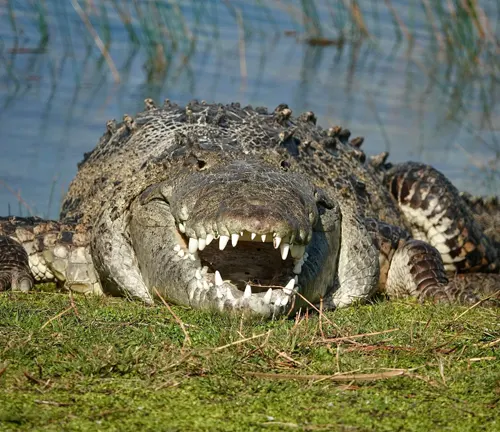
Frequently Asked Question (FAQs)
- What is the average lifespan of an American crocodile?
The average lifespan of an American crocodile in the wild is estimated to be around 70 to 100 years. - How large can American crocodiles grow?
American crocodiles can grow to impressive sizes, with males typically reaching lengths of over 15 feet and weighing more than 1,000 pounds. Females are generally smaller. - Are American crocodiles aggressive towards humans?
While American crocodiles are generally shy and reclusive, they can exhibit aggressive behavior if provoked or cornered. Encounters with humans are rare but can occur in areas where their habitat overlaps with human development. - What is the diet of American crocodiles?
American crocodiles are opportunistic predators and feed on a variety of prey, including fish, birds, mammals, and occasionally larger animals such as deer or domestic livestock. - How do American crocodiles differ from alligators?
American crocodiles can be distinguished from alligators by their narrower snouts and a more prominent fourth tooth visible when their mouths are closed. Additionally, alligators tend to prefer freshwater habitats, while crocodiles are more commonly found in brackish and saltwater environments. - Where can American crocodiles be found in the wild?
American crocodiles are found in coastal regions of the southeastern United States, as well as throughout the Caribbean and Central and South America. - What are the main threats to American crocodiles?
The main threats to American crocodiles include habitat loss, poaching, pollution, and climate change. - Are American crocodiles endangered?
American crocodiles are listed as a species of “Least Concern” on the International Union for Conservation of Nature (IUCN) Red List, although certain populations may be at risk due to localized threats. - Do American crocodiles hibernate?
No, American crocodiles do not hibernate. They are active year-round and can tolerate a wide range of temperatures. - Can American crocodiles be kept as pets?
No, American crocodiles are not suitable as pets due to their large size, aggressive behavior, and specific habitat requirements. - Are American crocodiles legal to hunt?
In some regions, American crocodiles are legally hunted for their skin and meat. However, strict regulations and permits are usually required. - How do American crocodiles reproduce?
During the breeding season, females build nests of vegetation where they lay their eggs. The eggs are then carefully guarded by the females until they hatch, and the hatchlings are guided to water. - Are American crocodiles nocturnal?
American crocodiles are primarily active during the day but may also be active at night, especially when hunting. - How do American crocodiles communicate with each other?
American crocodiles communicate through vocalizations, body language, and chemical signals. They may produce low-frequency bellows, hisses, and grunts to establish territory or attract mates. - What role do American crocodiles play in their ecosystems?
American crocodiles play a crucial role as top predators, regulating prey populations and maintaining the health and balance of their ecosystems. They also help to control the abundance of smaller animals, preventing overpopulation and preserving biodiversity.



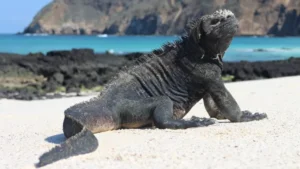
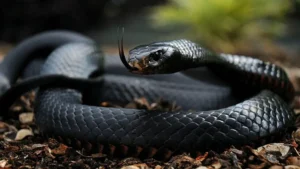



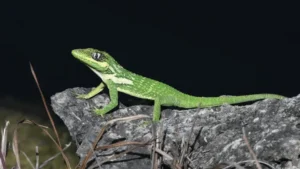


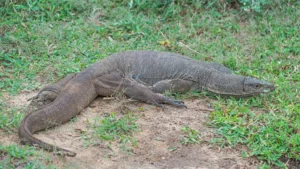
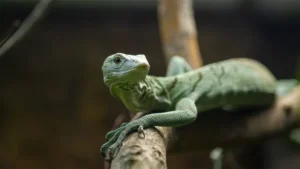

Leave your comment